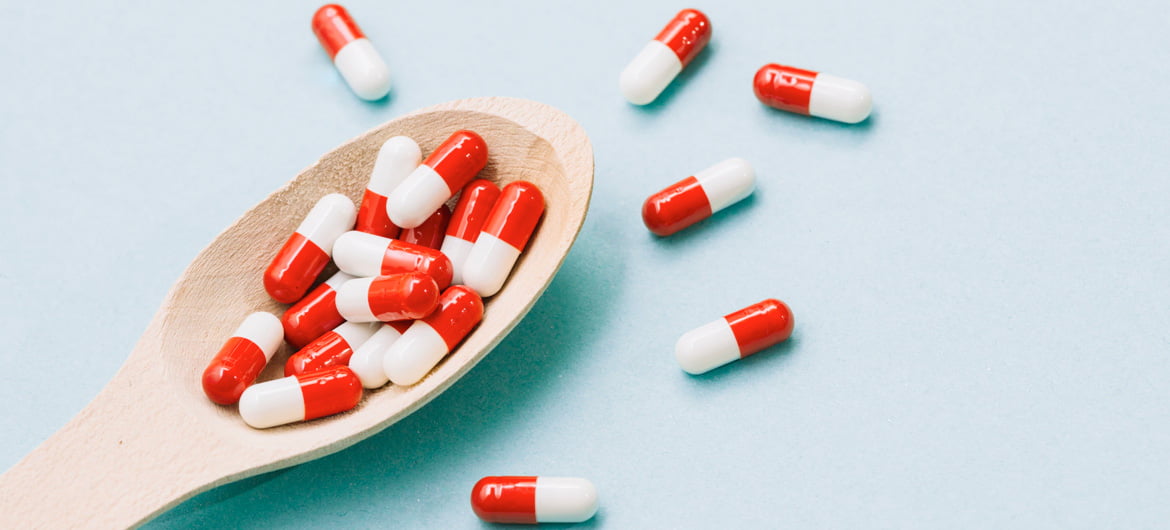You’re sitting across from your plate, maybe it’s loaded with fried takeout, or maybe you’ve started trying to “eat better” after noticing something’s felt a little off lately.
It’s not just about weight anymore. There’s a bigger issue at play.
More men are quietly noticing changes in their performance, especially when it comes to keeping an erection. What many don’t realize is that what we eat daily can play a surprisingly large role in that. YES, the same meals affecting your heart, blood sugar, and cholesterol could also be affecting what happens in the bedroom.
And no, it’s not just about aging. Men in their 70s and 80s still enjoy healthy intimate lives when they stay physically and nutritionally strong. So the real question is: what if your fork holds more power than you thought?
Let’s look at how diet and erectile dysfunction are connected and why understanding this link could change more than just your intimate life.
The Link Between Diet, Health, and Erectile Function
Erectile dysfunction (ED) means difficulty getting or maintaining an erection firm enough for intimacy. While common, it’s not just a concern for older men. In many cases, ED signals underlying health issues like heart disease, high blood pressure, obesity, and diabetes, all of which affect blood flow, hormones, and nerve function.
Because of that, ED is often more than a bedroom problem. It can be an early red flag for deeper health concerns.
Now the question that might come to everyone’s mind is: WHERE DOES DIET FIT IN?
What you eat impacts everything from blood circulation to testosterone levels. Poor nutrition plays a key role in the same conditions that lead to ED.
But the good news? Studies show that men who follow healthy diets rich in fruits, veggies, whole grains, and lean proteins are less likely to experience ED, and some even improve symptoms naturally.
Small changes in what’s on your plate can lead to big changes in your health and performance.
Also Read: When to Seek Medical Help For ED? Understanding the Signs Before It’s Too Late
How Your Diet & Nutrition Impacts Erections? The Science Behind Food and Function
Now that we know ED isn’t just about age or stress, the next big question is: what’s really happening in the body? And how does your diet play into all of this?
Let’s break it down.
1. It All Starts with Blood Flow
Good blood flow is the foundation of a strong erection, and that depends on nitric oxide, which helps your vessels relax and open up.
But poor eating habits? They cause inflammation and oxidative stress, which damage your vessels and limit nitric oxide. Result? Sluggish blood flow and higher ED risk.
2. Hormones Matter Too
Testosterone plays a central role in sexual desire and performance. When levels drop, libido and erection quality often follow. Excess body fat can also raise estrogen, which disrupts hormonal balance and makes the problem worse.
3. Inflammation: The Hidden Saboteur
Chronic inflammation may not be visible, but it can silently damage blood vessels, reduce nitric oxide, and interfere with nerve function. Diets high in processed foods and sugar are often behind this ongoing internal stress.
4. Metabolic Health = Bedroom Health
Conditions like diabetes, obesity, and high blood pressure are closely tied to erectile dysfunction. These issues disrupt blood flow, nerve signals, and hormone levels all at once, making ED more likely and often more persistent.

Diet Patterns That Actually Work for ED: What Science Tells Us
So now that we know why food matters when it comes to performance, let’s talk about how to eat smarter, not just isolated “superfoods,” but full-on dietary patterns that fuel better circulation, hormonal balance, and overall vitality.
And spoiler alert: this isn’t about boring salads or starving yourself. Some of the best diets for erectile dysfunction are also delicious, flexible, and easy to stick to.
1. The Mediterranean Diet: A Time-Tested Winner
If there’s one eating style that consistently shows up in research for boosting erectile health, it’s the Mediterranean diet — and for good reason.
This isn’t a “diet” in the restrictive sense. It’s more like a way of eating that centers around:
-
- Colorful fruits and veggies
- Whole grains and legumes
- Lean proteins (especially fish and poultry)
- Healthy fats like olive oil and nuts
- Minimal red meat and processed junk
- Herbs and spices for flavor, not salt
And yes, even the occasional glass of red wine fits into the mix (cheers to that).
Why it Works
Here’s where it gets interesting: studies show that following a Mediterranean diet can significantly reduce the risk and severity of erectile dysfunction, even reversing symptoms in some men.
How? It checks off every box:
-
- Boosts blood flow by improving nitric oxide levels.
- Fights inflammation thanks to its antioxidant-rich foods (like tomatoes, berries, and olive oil).
- Supports heart health and metabolism, tackling risk factors like high blood pressure, diabetes, and obesity.
- Promotes healthy testosterone levels, especially due to its balance of good fats and nutrient-dense foods.
In fact, a major study of over 21,000 men found that those who stuck closest to a Mediterranean diet were far less likely to experience ED, especially younger men. Other research shows that the diet improves endothelial (blood vessel) function, enhances antioxidant levels, and even helps with hormone regulation.
It’s like a multitool for your health, hitting all the systems that matter most when it comes to erections.
2. Plant-Based Diets: Going Green, Gaining Strength
Think “plant-based” is just for vegans or environmentalists? Think again.
Emerging science shows that plant-based diets, whether vegetarian, vegan, or mostly plant-forward, are strong contenders in the fight against ED. They’re rich in:
- Polyphenols (powerful antioxidants that support blood flow)
- Fiber, which helps regulate blood sugar
- Anti-inflammatory nutrients that protect blood vessels
One major analysis of 14 studies found that men following plant-based diets had significantly lower risk of erectile dysfunction, especially when their meals were full of whole, unprocessed foods like vegetables, nuts, seeds, legumes, and fruits.
The American Urological Association even acknowledges a strong link between higher plant-based intake and lower ED risk. That’s a big deal.
But what about testosterone?
Contrary to old myths, a well-balanced vegan diet for erectile dysfunction doesn’t lower testosterone, especially when it includes enough healthy fats, zinc, and protein sources like lentils, tofu, and seeds. In fact, some plant-based eaters report better energy and libido after making the switch.
The key is making sure the diet is rich in nutrients and not overly processed, skipping the fake meats and loading up on whole plant foods instead.
3. Low-Fat Diets: Proceed with Caution
Now, what about low-fat diets? They’ve been praised for their heart health benefits, but do they also help or hurt when it comes to erectile dysfunction (ED)?
The answer: it depends.
Some studies suggest that low-fat diets may reduce ED risk, particularly when they’re high in lean proteins and complex carbs. But other research has found the opposite, that extremely low-fat diets could actually worsen erectile function, likely due to their effect on testosterone.
Here’s the bottom line: it’s not about how much fat you eat, but what kind.
- Avoid: Trans fats, excessive saturated fat (found in fried foods, processed meats)
- Embrace: Healthy fats like olive oil, avocado, walnuts, and fatty fish
These fats not only support testosterone production but also reduce inflammation and protect blood vessels, all of which are crucial for optimal performance.
So instead of chasing low-fat labels, aim for a balanced fat intake that keeps your hormones and heart in sync.
So, Which Diet is Best For ED?
If you’re looking for a good diet for erectile dysfunction, the Mediterranean and whole-food plant-based diets are your best bets hands down. They hit all the right marks:
- Improve blood flow and nitric oxide levels
- Reduce inflammation
- Support hormone health
- Address metabolic issues that lead to ED
Even better? These diets are flexible, sustainable, and delicious. Whether you’re all-in on olive oil and fish, or leaning plant-based with hearty lentils and leafy greens, the key is consistency and choosing whole, nutrient-packed foods over processed junk.
The Nutritional Building Blocks of Stronger Erections
Now that we’ve explored the best nutrition for erectile dysfunction, it’s time to focus on the key nutrients: vitamins, minerals, and food components that directly support better blood flow, hormone production, and sexual function.
Food is more than fuel. It acts as a biochemical signal that affects circulation, testosterone levels, energy, and even mood. And when it comes to erectile dysfunction (ED), some nutrients are especially impactful.
| Comprehensive Food & Nutrient Guide for Erectile Health | |||
| Food Group | Examples | Key Nutrients | Primary Benefits |
| Vegetables | Spinach, kale, broccoli, bell peppers, and tomatoes | Nitrates, Vitamin C, Folate, Magnesium | Improve blood flow, reduce inflammation |
| Fruits | Berries, watermelon, oranges, avocado, kiwi | Antioxidants, L-citrulline, Zinc | Support nitric oxide, aid hormone balance |
| Legumes | Lentils, chickpeas, beans | Fiber, Protein, Zinc, Folate | Improve cholesterol and testosterone support |
| Whole Grains | Oats, quinoa, brown rice, whole wheat | Complex carbs, Fiber, B Vitamins | Boost energy, support vascular and nerve health |
| Nuts & Seeds | Walnuts, almonds, flaxseeds, pumpkin, chia | Omega-3s, L-arginine, Zinc, Vitamin E | Promote nitric oxide, support testosterone |
| Fatty Fish | Salmon, mackerel, sardines, tuna | Omega-3s, Vitamin D, Protein | Reduce inflammation, enhance vascular function |
| Lean Proteins | Chicken, turkey, eggs, tofu | High-quality Protein, Zinc, B12 | Support hormones, libido, and tissue repair |
| Healthy Oils | Olive oil, avocado oil | MUFAs, Antioxidants | Improve cholesterol, support heart and hormone health |
| Extras (moderate) | Dark chocolate (70 %+ cocoa, but in moderation) | Flavonoids, Antioxidants | Boost nitric oxide, support blood vessel function |
Foods to Limit or Avoid for Erectile Health
Certain foods harm blood vessels, disrupt hormones, and increase inflammation, all worsening erectile dysfunction. Limiting these is key for better vascular and sexual health.

When and How to Seek Professional Help for ED
If you experience ED or have health issues like diabetes, consult a doctor for proper diagnosis. A registered dietitian can help tailor your diet, and always inform your provider about any medications or supplements. Effective treatment often combines medical care, lifestyle changes, and mental health support.
Also Read: Can Lack of Sleep Cause Erectile Dysfunction? Yes, But Know HOW?
Conclusion
Now, after knowing the role diet plays in erectile health, it’s clear that eating nutrient-rich foods like those in the Mediterranean or plant-based diets can really make a difference. They help improve blood flow, reduce inflammation, and keep your hormones in check. At the same time, cutting back on saturated fats, added sugars, and processed foods is just as important.
However, ED isn’t solely about diet; it can indicate other health issues. If symptoms arise, consult a healthcare professional. With proper medical advice, nutrition, and lifestyle changes, you can achieve lasting improvements in sexual health and overall well-being.
Disclaimer: This blog is meant to inform and guide, but it’s not a replacement for professional medical advice. Always check in with your healthcare provider before making changes to your diet or treatment plans, especially when dealing with erectile dysfunction or other health concerns.



